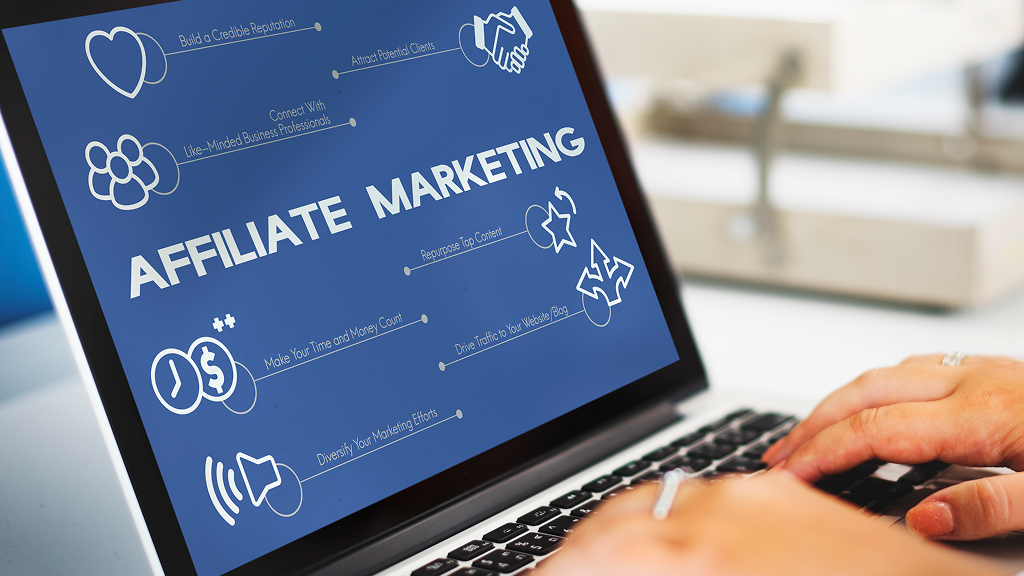What is Affiliate Marketing & Video-First Channels?

Table of Contents
Affiliate marketing today is changing beyond search-driven clicks and legacy blogs. As video-first platforms become increasingly popular, shoppable video and live shopping marketing are becoming new avenues of engagement for businesses. This is in accordance with shifting social commerce trends, where consumers prefer engaging, fun, and interactive shopping that goes with trust, transparency and performance-based outcomes.
-
Understanding Affiliate Marketing in 2025Understanding Affiliate Marketing in 2025
-
Why Video-First Platforms MatterWhy Video-First Platforms Matter
-
The Growth of Social CommerceThe Growth of Social Commerce
-
Live Shopping & Its Competitive EdgeLive Shopping & Its Competitive Edge
-
The Advantage of Performance-Based ModelsThe Advantage of Performance-Based Models
-
Technology is Fueling the ShiftTechnology is Fueling the Shift
-
Integration, Not ReplacementIntegration, Not Replacement
-
FAQsFAQs
Understanding Affiliate Marketing in 2025

Affiliate marketing remains based on the same concept: partners receive commissions for producing trackable sales or leads, yet the environment has become more sophisticated. Now, affiliate programs transcend blogs, coupon websites or search traffic. They extend to various touchpoints, including social commerce affiliates on Instagram and Pinterest, as well as video affiliate campaigns on YouTube and TikTok.
What distinguishes 2025 is the size and complexity of such channels. Tracking tools, attribution platforms and video commerce strategies enable brands to trace the consumer journey on multiple platforms, with creators able to monetise real content through shoppable videos and live shopping marketing. This intersection of technology and creativity is what differentiates today’s affiliate marketing from its previous models.
Why Video-First Platforms Matter
With video representing over half of all internet traffic today, it’s little wonder that video affiliate campaigns aren’t just becoming prominent – they’re taking centre stage. Short-form destinations such as TikTok and Instagram Reels are rewriting the future of commerce by blending storytelling, entertainment and shopping into one continuous flow.
The rise of TikTok Shop marketing is a clear sign. Thousands of live sessions run daily, where creators demo products in real time, answer questions and provide social proof, all of which boost trust and conversions. Categories like beauty and personal care are thriving in this format, showing how video commerce strategies work best when content matches audience expectations.
The Growth of Social Commerce
Outside of TikTok, the larger social commerce affiliate landscape is transforming rapidly. Instagram Shopping, Pinterest and Facebook Marketplace are no longer simply discovery platforms; they’re being turned into shopping destinations.
Differing from conventional affiliate websites, social commerce works on inspiration. A shopper browsing Pinterest may not be in need of a new sofa, but a well-placed shoppable video or product pin can inspire interest and drive a purchase. That is where the social commerce trends of 2025 are redefining the way people shop, less search, more discover.
Live Shopping & Its Competitive Edge
One of the most exciting shifts is live shopping marketing. This format, hugely popular in Asia, is gaining traction in Europe and the US. Why? Because it solves a core consumer pain point, uncertainty.
In a time when 55% of consumers claim they can’t afford to make bad decisions, live streams deliver transparency. They get to observe the product in use, pose questions in real-time, and make informed buying decisions. This inimitable authenticity lends live shopping a competitive advantage over static product pages or even classic commercials.
The Advantage of Performance-Based Models
The strength of affiliate marketing is its pay-for-performance strategy. With video affiliate campaigns and social commerce affiliate programs, tracking mechanisms guarantee influencers and agencies get paid for genuine sales, not impressions or clicks.
This setup works well for everyone; brands only spend money when a sale actually happens, and creators are motivated to share genuine, engaging content that encourages people to buy. It’s a win-win in the evolving affiliate marketing examples we’re seeing across industries.
Technology is Fueling the Shift
Advancements in attribution, mobile-first content tools and fintech solutions are removing barriers. Small creators now have access to professional-grade editing apps, easy-to-use live streaming tools and seamless checkout integrations.
This democratisation also means video commerce plans aren’t reserved for large brands; startups and individual entrepreneurs can also benefit from them.
Integration, Not Replacement
It’s easy to view video-first platforms as the way of the future and exclude the traditional ones. However, in practice, the best affiliate plans in 2025 will integrate both. Search-driven traffic and Google campaigns continue to bring steady income, while new channels such as social commerce and live shopping marketing provide new growth prospects.
Scalability continues to be a challenge for live shopping and not all product categories have a natural fit into shoppable video formats. The solution is balance: understanding which channel suits best each audience and product.
FAQs
1:What are the biggest affiliate marketing trends in 2025?
Video-first channels, shoppable videos, live shopping and social commerce are the biggest affiliate marketing trends in 2025.
2: How does TikTok Shop marketing work in affiliate programs?
Creators promote products through live sessions and short videos, earning commissions on sales.
3: What is video commerce, and why is it important?
Video commerce is selling via videos that demonstrate products in use, making quicker purchasing decisions for buyers.
4:Are performance-based affiliate models still relevant in 2025?
Yes! Brands pay only for actual sales, making it cost-effective and measurable.
Affiliate marketing in 2025 is no longer just about links on blogs; it’s about creating experiences. From TikTok Shop marketing to shoppable videos and live shopping marketing, the industry is moving toward formats that blend entertainment, education and commerce.
Companies that evolve early to these 2025 affiliate marketing trends will be well-placed to connect consumers who shop via interaction and inspiration. The future is for those embracing the video-first channels but holding firm to the solid foundation of traditional affiliate marketing.
Have a Brilliant Idea?
Choosing between Google Ads and Facebook Ads depends on what your business needs. If it’s reaching people actively searching or inspiring new interest.
1. What’s the Difference?
Google Ads vs Facebook Ads work in different ways.
Google Ads are based on paid search. These ads show up when people search for something using keywords like “best plumber” or “pizza near me”.
Facebook ads vs Google ads are based on paid social. Facebook shows ads to people based on their interests, age, and behavior, even if they aren’t looking for your product.
So, when we compare Google Ads vs Facebook, Google focuses on intent while Facebook focuses on interest.
2. Targeting Options
Google and Facebook ads offer different ways to target the right people.
- Google Ads lets you target users by keywords, location, device type, language, and search intent.
- You can use tools like Google Keyword Planner to find the right keywords and Google Ads Audience Manager to create custom audience lists.
- Facebook Ads allows targeting by interests, age, gender, relationship status, location, and online behavior.
- Facebook also offers Lookalike Audiences to find new users similar to your best customers.
- You can use Meta Ads Manager to set up detailed audience targeting and track performance.
In the Facebook vs Google Ads debate, Google is better for people who are actively searching. Facebook is better for reaching new people based on their lifestyle.
3. Ad Formats and Reach
Here’s how Google Ads and Facebook Ads compare in formats and reach.
- Google Ads offer formats like search ads, display ads, shopping ads, and YouTube ads
- Facebook Ads include feed ads, carousels, stories, and reels across Facebook and Instagram
- Google handles over 3.5 billion searches daily
- Facebook has around 3 billion monthly active users
So, Facebook ads vs Google AdWords offer strong visual formats, while Google is better for high-intent audiences.
4. Costs, Conversion Rates, and ROI
Let’s look at the cost and performance of Google Ads and Facebook Ads.
- Google Ads usually cost $1–$3 per click, but can go over $50 in competitive industries
- Facebook Ads cost around $0.50 to $1.50 per click
- Facebook has a lower budget entry point, starting from $5 to $10 per day
- Google Ads have a conversion rate of about 4.40% for search and 0.57% for display
- Facebook Ads have an average conversion rate of 9.21%
- Facebook’s cost per conversion is around $18 to $19
- Google Ads cost per conversion is higher, usually between $48 to $56
So, when comparing Facebook ads and Google ads conversion rate, Facebook often gives better results for less money.

